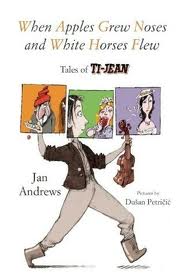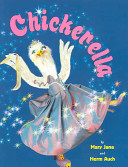When Matthew moves to Vancouver with his mother, he’s not able to bring along his dog Lucky, because the apartment building he is moving into does not allow dogs. But when Matthew’s imaginary dog scares off a burglar, all the tenants argue that Lucky should be allowed to come live there.
Canada
Materials from Canada
Explorers: Rainforests
Readers can dive into one of the most biologically diverse environments in the world, and explore the plants, animals, and people of the rainforest through a series of story scenes designed to highlight key topics in rainforest education. From the towering trees, to life in the canopy, dwelling in the dark on the forest floor, and the role the river plays in the rainforest environment.
Ones and Twos
This concept book explores numeracy, sorting, and pairing. Each brightly illustrated page invites children to identify familiar objects ranging from kites to socks, from one nest to the two birds sitting in it. Ones and Twos gives little toddlers and their caregivers much to discuss and to enjoy together, and it introduces an exciting new creative team.
My Arctic 1, 2, 3
When Apples Grew Noses and White Horses Flew

In these three imaginative stories, Jan Andrews introduces us to Quebec’s traditional folktale hero, Ti-Jean. He’s an endearing character who is both wise and foolish, and though he does find himself in hard situations (often of his own making), in the end, he somehow manages to do what needs to be done. In “Ti-Jean and the Princess of Tomboso” he eventually outwits a greedy princess; in “Ti-Jean the Marble Player” he gets the best of a pint-sized scoundrel; and in “How Ti-Jean Became a Fiddler” he turns the tables on a too-clever-for-her-own-good seigneur’s daughter, and finds true love in the process.
The Gingerbread Man Loose in the School
When a class leaves for recess, their just-baked Gingerbread Man is left behind. But he’s a smart cookie and heads out to find them. He’ll run, slide, skip, and (after a mishap with a soccer ball) limp as fast as he can because: “I can catch them! I’m their Gingerbread Man!” With help from the gym teacher, the nurse, the art teacher and even the principal, the Gingerbread Man does find his class, and he’s assured they’ll never leave him behind again.
The Flying Canoe: A Christmas Story
One frosty Christmas Eve in the Canadian wilderness, six homesick fur traders are visited by a mysterious stranger. The man claims that he can send them home to faraway Montreal that very night, but on one condition: they must not utter a word until they reach their homes. Agreeing to the terms, the fur traders climb into an enchanted canoe and paddle through the sky. But when hot-headed Armand cannot keep silent, it will take a daring move to outwit the stranger.
Migrant
Migrant farmers and their families represent an ever-growing body of laborers around the world. They are used as cheap labor but most of them are not allowed to settle down, integrate into their host countries and become citizens with full rights. This is, of course, devastating to their children.
Among these groups are the Mennonites from Mexico, who originally went to Mexico from Canada in the 1920s. They speak “Low German” and though many are poor, they are an important part of the Mexican farm community. Because of free trade and the fact that Mexican farmers cannot compete with highly subsidized US farmers, they have been forced to come back to Canada — as migrant workers — in order to survive. Anna is the child of Mennonites from Mexico, who have come north to harvest fruit and vegetables. Sometimes she feels like a bird, flying north in the spring and south in the fall, sometimes like a jackrabbit in an abandoned burrow, since her family occupies an empty farmhouse near the fields, sometimes like a kitten, as she shares a bed with her sisters. But above all Anna wonders what it would be like to be a tree rooted deeply in the earth, watching the seasons come and go, instead of being like a “feather in the wind.”
City Numbers
Joanne Schwartz and Matt Beam have discovered numbers in many different forms all over the city. They are on houses and apartment buildings, on store windows and doors, on trucks and garbage bins, on sidewalks and parking spots. They are printed, spray-painted, molded in plastic, chiseled in stone, stamped on vinyl, even torched into metal. We see these numbers, often unconsciously, every day, but the wonderful photographs in this book prompt us to look at them more closely, becoming aware and alive to the art, serendipity and variety that surround us.
Chickerella

When Chickerella’s new step mother and step sisters, Ovumelda and Cholestera, move in, life in the chicken coop takes a turn for the worst. Forced to cook and clean for her new family, Chickerella won’t even be able to attend the Fowl Ball, that is, until her Fairy Goosemother appears. The unusually stylish Chickerella dazzles the prince in her eggsquisite gown but at the stroke of midnight, she must race home before the spell is over. Will the prince ever be able to find his love? Only a glass egg remains a clue to her identity.

